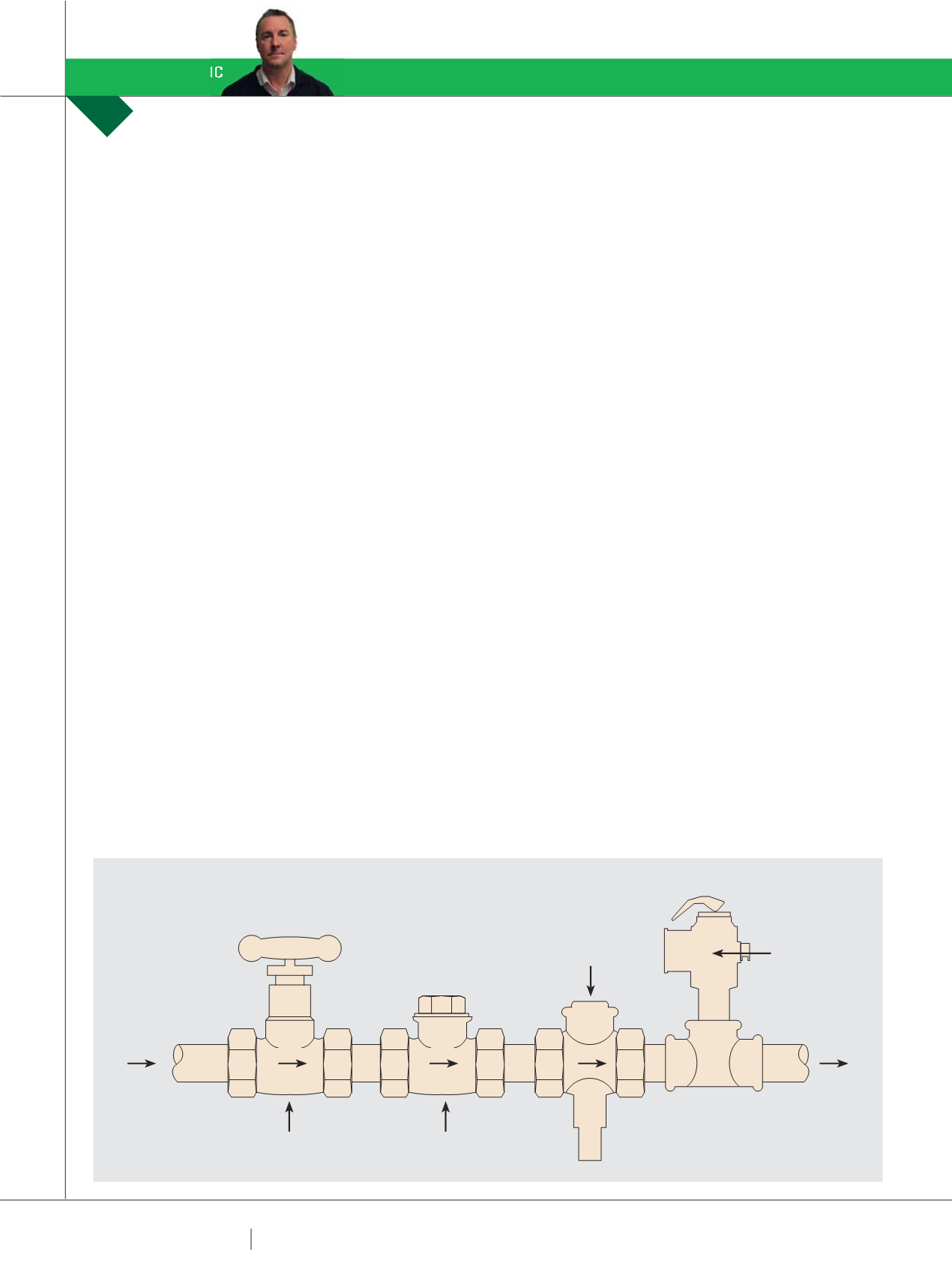

7 0
PLUMBING CONNECTION
SPRING 2015
EXPANSION CONTROL VALVES
A
lso known as Cold Water Relief Valves, Expansion
Control Valves (ECV) are necessary to be installed in
some states in Australia and areas where the water
supply has a high saturation index (the saturation index
indicates the tendency of water to form or deposit scale).
Water with a high saturation index is referred to as scaling
water because calcium carbonate is deposited out of the
water and forms a scale on any hot metallic surface.
In scaling water areas, it is possible for the TPR valve
fitted to the mains pressure storage tank to eventually
become blocked with calcium deposits as the scaling water
passes through the hot valve body. If the TPR valve were
to become totally blocked, the cylinder would eventually
become distorted due to expansion.
To prevent this occurrence, every water heater installed
in a scaling water area must have an ECV fitted on the cold
water inlet to the water heater. The valve should be fitted
after the non-return valve and must be the last valve before
the water heater (see diagram).
The pressure relief setting on the ECV is lower than the
relief valve setting on the TPR valve; therefore pressure
relief within the system will occur through the ECV. As the
water that’s relieved is cold, the incidence of scale build up in
the ECV is reduced dramatically. The TPR valve is therefore
not relieving pressure and scale build up will not occur.
The TPR valve must remain installed as normal as it also
performs a secondary safety function of relieving heat
energy under high temperature conditions.
Every mains pressure water heater installed in South
Australia and Western Australia must have an ECV fitted to
comply with local plumbing regulations. Any other supply
to a water heater with a saturation index greater than +0.4
needs to be fitted with an ECV to comply with the suppliers’
warranty.
Check your local plumbing regulations for details of the
requirements for drainage from the ECV (or refer to the
suppliers’ water heater installation instructions).
PIPE INSULATION
Heat loss from hot water plumbing can be considerable,
particularly if the water heating system is operating on
a flow and return loop. To conserve fuel and to minimise
running costs, all hot water piping with circulating water
should be insulated. ASNZ 3500.4 provides minimum
insulation requirements for various geographic zones.
Standard domestic installations should have at least the
first two metres of the hot water plumbing insulated. This
will reduce the heat lost from conduction through the water
and pipe material.
If a circulating pump is installed, a timing device should
be fitted to have circulation occur in the domestic dwelling
only when hot water is required to fixtures. This timing
activation should be discussed with the customer, to ensure
its operation suits their hot water usage and requirements.
JON PALFREY
EXPLAINS THE NEED FOR EXPANSION CONTROL VALVES WHILE ALSO TOUCHING ON PIPING
INSULATION AND HEAT TRAPS.
HOT WATER HEATER INSTALLATIONWITH ECV
HOT WATER CLINIC
JON PALFREY
TO UNION
CONNECTOR
NON-RETURN VALVE
STOPCOCK
PRESSURE-LIMITING
VALVE
EXPANSION-
CONTROL VALVE
















